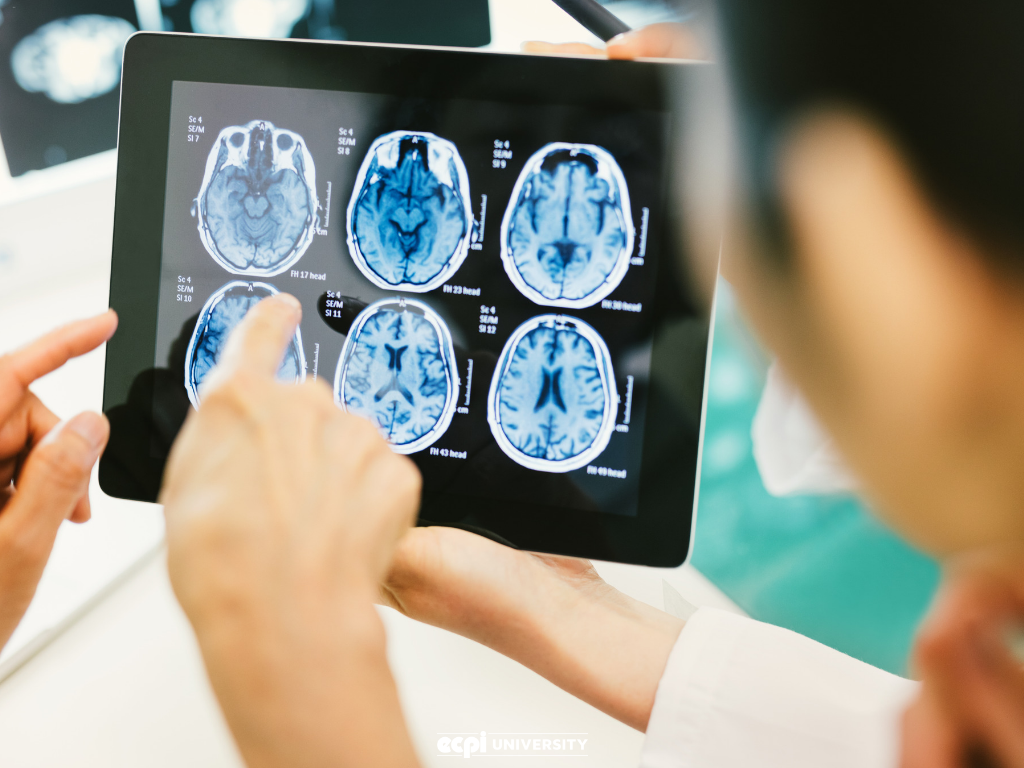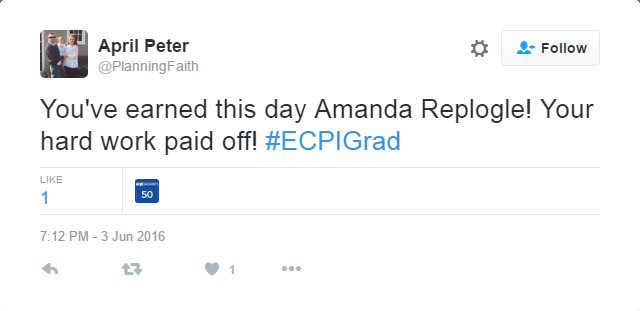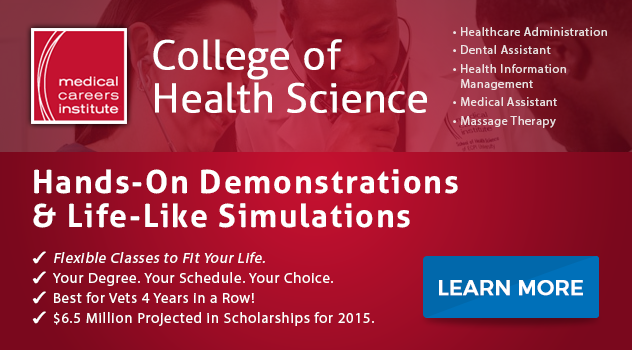50 Medical Milestones Since ECPI University opened in 1966
Celebrating ECPI University’s 50th Anniversary
Fifty years ago, ECPI University was founded to meet a great demand in the employment marketplace. At that time, computers were coming of age, but there were not enough schools teaching computer programming. ECPI University responded.
In much the same way, ECPI University responded again when the need for health professional began to grow. Now, it’s one of the nation’s largest producers of graduates in the field of healthcare. The medical field has changed dramatically since 1966, and so has ECPI University. On this, its 50th anniversary, let’s take a look 50 medical milestones, year-by-year:
This medication is still used today to treat fluid retention.
2. 1967: First Human-to-Human Heart Transplant – Performed by South African surgeon Christiaan Barnard at Groote Schuur Hospital in Cape Town, South Africa.
3. 1968: FDA Approves Imuran – Used for preventing kidney transplant rejection.
4. 1969: First Artificial Heart – Implanted temporarily by Dr. Domingo Liotta and Dr. Denton A. Cooley at The Texas Heart Institute in Houston.
5. 1970: Rubella Vaccine – First developed by Maurice Hilleman while working at Merck.
6. 1971: CT Scanner - The first commercial CT scanner, developed by Dr. Godfrey Hounsfield, was used on a patient in London.
7. 1972: The Nobel Prize in Physiology or Medicine – Awarded jointly to Gerald M. Edelman and Rodney R. Porter for their discoveries concerning the chemical structure of antibodies.
8. 1973: First Insulin Pump – Patented by inventor and entrepreneur Dean L. Kamen.
9. 1974: Meningococcal Polysaccharide Vaccine Licensed – Effective against meningococcal group A, one of five major types of meningococcal bacteria.
10. 1975: The Nobel Prize in Physiology or Medicine – Awarded jointly to David Baltimore, Renato Dulbecco, and Howard Martin Temin for their discoveries concerning the interaction between tumor viruses and the genetic material of the cell.
11. 1976: Genentech Founded – A company formed by venture capitalist Robert A. Swanson and biochemist Dr. Herbert W. Boyer, it would later be responsible for a long list of medical breakthroughs, including cloning human insulin, Activase for dissolving blood clots, and a wide range of cancer treatments.
12. 1977: New Chemotherapy Regimen for Testicular Cancer – Dr. Lawrence Einhorn and his colleagues first report that a new chemotherapy regimen – combining cisplatin, vinblastine and bleomycin – produce complete remissions for almost three in four men with aggressive testicular cancer.
It's estimated that more than 60 million MRI examinations are done every year.
14. 1979: CS-3000 System – The first automated blood and cell separator. this device is able to draw whole blood, keep the desired component, and return the remaining components to the donor.
The implant works by providing sound signals to the brain while doing the work of the damaged part of the inner ear.
16. 1981: Recombivax HB – The first vaccine for Hepatitis B is approved.
17. 1982: Glucose Biosensor – Invented by Allen Hill and colleagues at the University of Oxford.
18. 1983: Monoclonal Antibodies – First used for a medical test.
19. 1984: Discovery of Telomerase – This enzyme protects the end of the chromosome from deterioration or from fusion with neighboring chromosomes.
20. 1985: Automated External Defibrillator – Used to treat heart attack patients, the AED has been credited for increasing survival rates up to 60 percent.
21. 1986: The Nobel Prize in Physiology or Medicine – Awarded to Stanley Cohen and Rita Levi-Montalcini for their discoveries in cell and organ growth.
22. 1987: Digital Hearing Aids – This breakthrough leads to better models that are more comfortable and of higher quality.
23. 1988: Laserphaco Probe – Patented by Patricia Bath, this device is used for ablating and removing cataract lenses.
24. 1989: Breakthrough in Schizophrenia Treatment – Dr. Herbert Meltzer discovers the use of clozapine in the treatment of resistant schizophrenia.
Plans were revealed in May 2016 to extend the project in order to create a synthetic human genome.
26. 1991: Demineralized Bone Matrix Gel – Used in surgery to promote bone healing.
27. 1992: Ventricular Assist Device – A mechanical pump that helps weak hearts pump blood through the body, it is often called a “bridge to transplant” because it can help patients survive until they get a new heart.
28. 1993: Ulcer Breakthrough – New England Journal of Medicine publishes findings demonstrating that patients with peptic ulcers can be successfully treated with antibiotics, lending strong support to the discovery that peptic ulcer disease is caused by H. pylori.
29. 1994: Palmaz-Schatz Balloon Expandable Stent – A cutting-edge device that changes the game for coronary artery obstructions.
30. 1995: Medical Lasers – Focused light sources to treat or remove tissues, they are used for a variety of vision, dental, cosmetic, and general surgery procedures.
31. 1996: Angio-Seal – A breakthrough vascular closure device that uses bio-absorbable components to mechanically seal punctures in the femoral artery after a catheterization procedure.
32. 1997: FDA Approval of Daclizumab – Used for the treatment of adults with relapsing forms of multiple sclerosis.
33. 1998: LightCycler Real-Time PCR – Using this, scientists can take a specimen containing a minute amount of genetic material, repeatedly copy a selected region from it, and within hours, generate a sample sufficient to perform a variety of tests.
34. 1999: CyberKnife Robotic Radiosurgery System – A miniature linear accelerator mounted to a robotic arm, it noninvasively delivers concentrated beams of radiation to a targeted tumor from multiple positions and angles.
35. 2000: Human Genome – A rough draft of the human genome is announced jointly by President of the United States Bill Clinton and British Prime Minister Tony Blair.
This tiny camera measures 11 by 32 mm and weighs less than 4 grams.
37. 2002: Hormone Replacement Discovery – Scientists announce results from a study proving that hormone replacement is associated with a significant increase in breast cancer.
38. 2003: Human Genome Project – Researches release final draft.
39. 2004: Rheo Knee – Ossur Corporation produces the first plastic prosthetic joint that adapts to a user's walking style and changes in terrain.
40. 2005: Facial Transplant - French oral and maxillofacial surgeon Dr. Bernard Devauchelle and colleagues perform the world's first partial face transplant.
41. 2006: Laboratory-Grown Bladder – A team at Wake Forest Baptist Medical Center in the North Carolina publish its success in transplanting the first laboratory-grown bladder into human patients.
42. 2007: Minimally-Invasive Robotic Surgery – Doctors at the Cleveland Clinic remove a diseased kidney from a patient through a single incision in the naval using a robot, drastically reducing recovery time and eliminating the typical 10-inch scar.
43. 2008: Impella 2.5 – A minimally invasive device that allows the heart muscle to rest and recover, it actively unloads the left ventricle, reducing heart muscle workload and oxygen consumption, and increases cardiac output.
44. 2009: Spray-On Skin Cells – Using a small skin biopsy, surgeons can create a spray-on solution to help repair the skin of burn victims.
45. 2010: Artificial Ovary – Scientists at Brown University report success creating an artificial ovary that could one day nurture immature human eggs outside the body.
46. 2011: Gastric Pacemaker – Abiliti is a credit card-sized implant that sends a signal that convinces the brain that the stomach is full.
47. 2012: Implantable Defibrillator – Device protects against sudden cardiac arrest.
48. 2013 Parkinson’s Detection – Researchers discover a biomarker found in proteins in spinal fluid that may help identify early-stage Parkinson’s Disease in patients, thereby improving treatment through early intervention.
49. 2014: Hepatitis C Treatment – A new drug, Sofosbuvir, promises the highest cure rates ever, reduced treatment time, and fewer side effects.
Breast cancer survival rates have increased with the majority of cases facing a 99% 5-year survival rate.
While doctors and researchers typically make the headlines, it’s the paramedics, nurses, medical radiographers, sonographers, surgical technologists, and medical assistants that provide much of the care to patients and save lives every day.
Maybe you’ve thought about a career in healthcare. If so, take a moment to explore all the programs offered at ECPI University. Contact one of our helpful admissions advisors today. It could be the first step toward a new and rewarding career.
It could be the Best Decision You Ever Make!
DISCLAIMER – ECPI University makes no claim, warranty, or guarantee as to actual employability or earning potential to current, past or future students or graduates of any educational program we offer. The ECPI University website is published for informational purposes only. Every effort is made to ensure the accuracy of information contained on the ECPI.edu domain; however, no warranty of accuracy is made. No contractual rights, either expressed or implied, are created by its content.
For more information about ECPI University or any of our programs click here: http://www.ecpi.edu/ or http://ow.ly/Ca1ya.




